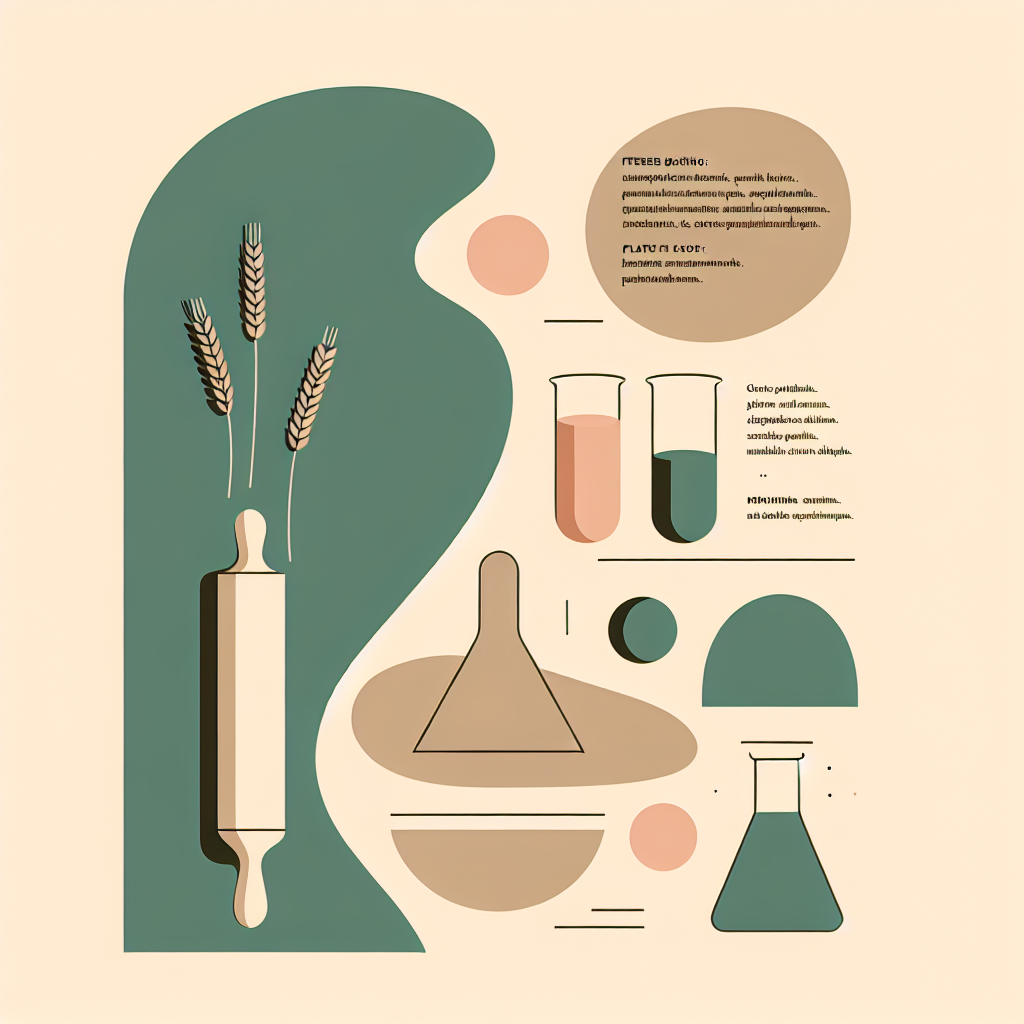There’s a special kind of magic in the air when you crack open the oven, slide out a baking sheet of crisp, golden goodies, and inhale that heavenly waft of freshly baked pastry. Life’s harshest problems instantly seem more manageable when you hold that moment in your hands, lovingly encased in a genteel puff of pastry. Except, living a gluten-free lifestyle can often feel like a magic trick gone wrong, and you’re left empty-handed, staring at second-rate gluten-free baking results that fall somewhere between a flatbread and a hockey puck.
Fret not, my fellow gluten-free wizards, because the magic is still within you! The trick is not in the twirl of your wand (or whisk, in this case) but in science — the science of gluten-free baking.
So, let’s put on our lab coats and start experimenting!
First up, understanding this sneaky culprit – Gluten. Fundamentally, gluten is the glue-like protein found preponderantly in wheat, rye, and barley. It’s the secret sauce in traditional baking that lends structure, elasticity, and that majestic lift to breads, cakes and pies. Now, how do we replicate these properties without gluten?
Here’s where our protagonist comes into play, or rather, a team of protagonists: gluten-free flours. Just like your favourite superhero team, each gluten-free flour arrives with its own superpower that can make your pastry fly higher, live longer or even pack a punch of flavor.
The most critical step in baking those covetable gluten-free pastries is perfecting your gluten-free flour blend. This may sound complex, but let me assure you, it’s not. It’s all about balance, akin to a perfect ballet performance where every leap, turn, and pause synchronizes beautifully. You’re the choreographer in this ballet of baking, outfitting the right flours to accomplish the desired texture and flavor for your recipes.
While all-purpose gluten-free flour blends are available in the market, they are often marked up significantly and aren’t as customizable. Fun fact, did you know that creating a homemade gluten-free flour blend is not only more affordable but also fun (yes, fun!) and can create a more flavorful end product? Get in the know of our [Ultimate Guide to Gluten-Free Flours](#) and discover how every flour pirouettes into the culinary performance.
You may triage your flours based on ingredients like rice, potato, sorghum, millet, or almonds, but pay heed to another spinning dancer in your ballet – the humble starch. Starches like potato starch, cornstarch, and tapioca flour are often overlooked but can play pivotal roles in achieving the right consistency and elasticity. They are lighter and less absorbent, helping to lighten the texture of the gluten-free pastry.
Here’s a pro-tip: don’t shun the Xanthan gum. This gluten alternative is like the invisible strings that hold the marionettes. It binds, stabilizes, and keeps everything from falling apart.
A pinch of patience may be what separates you from your perfect pastry. Gluten-free batter needs to rest before baking; the resting period helps flours and starches hydrate properly. This may be akin to the intermission in our grand ballet – a pause that rejuvenates.
There’s no denying that coming up with the perfect blend of gluten-free flours for your pastries is an experimental journey. Too heavy, and you wind up with a dense, dry mess; too light, and it falls apart at the merest touch. Fear not, fellow gluten-free bakers, as the door to a magical gluten-free world is yet wide open, and the key to exploring it is patience and persistence.
While the science of gluten-free baking might be a tad intimidating, it can also be an exciting journey, a series of trials, and lessons. Believe me when I say it gets easier with every extra step.
As you embark on this journey, remember to equip yourself with the right knowledge and tools. I recommend starting off with [How to Convert a Recipe to Gluten-Free](#), a post that will provide you with a launching pad to your gluten-free baking journey.
At the end of the day, remember, gluten-free baking is not about compromising or settling for less. It’s about adapting and finding new ways to enjoy what you love. You have the ability to create beautiful, satisfying pastries without gluten, and I am here cheering you on every step of the way.
So, here’s to your magical, yet scientific, journey in the enchanting world of gluten-free baking. Roll up those sleeves, put on your aprons, and let the ballet of baking commence!
**Category: Baking & Cooking Science**


